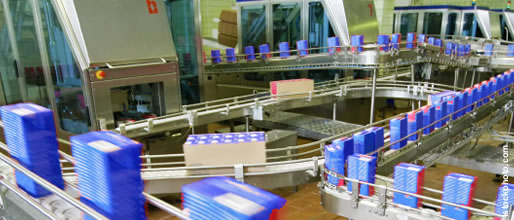
A short history of food hygiene
Contaminated food can rapidly become a deadly danger. Right from the start, humanity worried about "food hygiene" —even though this term was only heard for the first time in the19th century.
Here is a brief journey through the history of food hygiene leading to the our own developments in food sanitation through modern technology...:
Hygiene is derived from the Greek word "hygienos," meaning healthy and beneficial. The availability of healthy, beneficial nutrition is essential —causing humans to consider, even thousands of years ago, how to correctly store and handle foods so that they were available for consumption over long periods of time.
The safety of food: Always essential for existence
In addition to techniques for preserving foods, laws and regulations were also developed early on to control the handling of foods. Numerous "food taboos" were already known in ancient times. They often had a ritual and religious character - yet always continued to serve food hygiene. For instance, Judea prohibited the consumption of pork in 1800 B.C. India developed a list of "unclean" foods in 500 B.C. This list included meat cut with a sword, dog meat, human meat and much more.
The Middle Ages were another period in which food regulations were continuing to be developed. King John in England passed the first food law in 1202.
Hygiene boom in the 19th century
But, regulations in food sanitation became even more prevalent in the 19th century: The blooming of science and technology created the definition of "hygiene" as we still use it today. Back then, with the dawning of the industrial revolution, production of food increasingly became industrialized in form. The development of new processes to make food sustain for longer periods and reduce germs during production went hand in hand with this industrialization. Development was rapid:
- 1850 - British scientist John Tyndall developed the Tyndallization process for germ reduction in heat-sensitive foods
- 1855 - Friedrich Küchenmeister discovered the relationship between pork tapeworms in humans and the parasitic infection cysticercus cellulosas
- 1860 - Friedrich Albert Zenker proved the infectiveness of parasitic trichinae roundworms
- 1864 - French chemist Louis Pasteur invented the Pasteurization process for the preservation of food
- 1895 - Carl von Linde developed a cooling process to preserve food.
Technical processes around food hygiene continued to develop in the 20th and 21st centuries. Another force came from politics and legislation—increasing numbers of regulations ensured more safety in the production of food. Starting from the "Food and Drugs Act" and the "Meat Inspection Act" passed by the US Congress in 1906, all the way to thejoint EU regulation for food hygiene 100 years later—making companies liable for complying with specifications on food safety.
Food: Thanks to modern technology, safer today than ever before
We are in the lucky situation today that our food is safer from contamination and impurities than ever before. This has been made possible by ever stricter laws and by technological developments which contribute to increasing food hygiene right from the start of production.
The new hygienic load cell PW27 by HBM is following this tradition: As an essential component, it enables the efficient and precise operation of food packaging and filling systems, multi-head weighers and static scales. It continues to comply with the latest discoveries in hygiene research so that we can continue to trust in our food now and in the future - so it remains healthy and beneficial as defined by the term hygiene.
PW25 - 'easy-to-clean' load cell
- Integrated, encapsulated overload stop
- Installation-compatible to industry standard load cell SP-4
- Stainless steel housing with IP68 / IP69K protection
- Maximum capacity 10 kg and 20 kg
- Easy to clean
PW27 - hygienic load cell
- EHEDG-certified
- Designed to hygienic aspects
- Aseptic design for top safety
- Suitable for humid, aggressive environments
- Stainless steel housing with IP68 / IP69K protection
- Maximum capacity 10 kg and 20 kg
- Easy to clean



